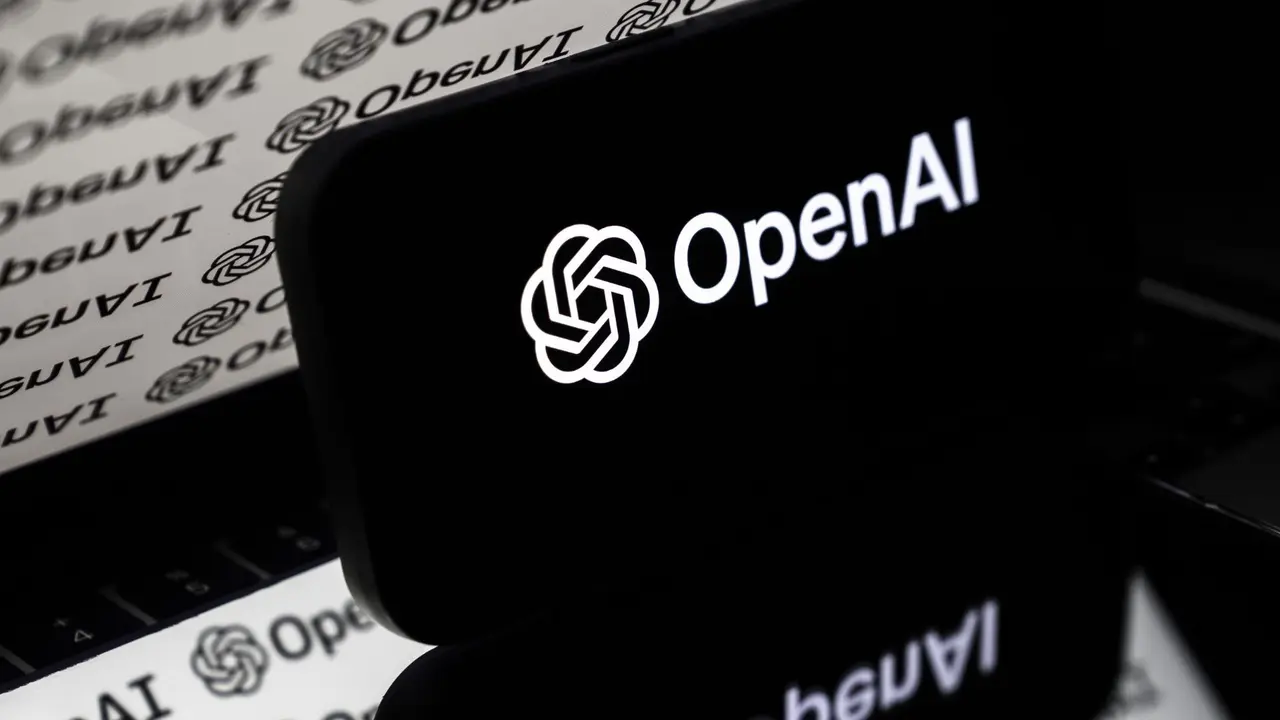AI Revolutionizes Emergency Room Triage: Machine Learning Identifies At-Risk Patient Groups
2 Sources
2 Sources
[1]
Using machine learning to shed light on how well the triage systems work
University of BergenOct 27 2025 A multinational collaboration at Eitri medical innovation center in Bergen, Norway, has used machine learning models to identify patient groups at risk of being mistreated. Doctors must make hard choices every day at the emergency department (often called the ED or ER). They usually have a system that helps them get the right level of care for patients, called triage. Triage systems help doctors determine when a patient is facing a true medical emergency and need treatment immediately, or when it is probably safe to delay treatment. Still, mistakes can happen, and sometimes patients don't get the help they need." Dr. Sage Wyatt at the Faculty of Medicine, University of Bergen, Norway There is no universal triage system, and it can be difficult to evaluate how well different systems function. Now, an eclectic team of Norwegian and German researchers from academic, industry, and medical sectors, has used machine learning to shed light on how well the triage systems work in Bergen and Trondheim, Norway. The collaboration sprung out of a "Datathon" at Eitri Medical Incubator, Bergen in 2022, supervised by Dr. Christopher Sauer, an oncologist from the Institute for AI in Medicine from Essen, Germany. This project eventually led to a publication in the Journal of Medical Internet Research. First author, Dr. Sage Wyatt, defends the value of using machine learning to analyze medical data: "In this setting, machine learning methods allowed us to consider the importance of many complex factors that impact triage classification simultaneously, providing more nuanced results than conventional methods", she says. The results were surprising The data scientists in Wyatt's team wanted to find out what kinds of patients were failed by the triage system, such as patients who were given low priority but who later died or got transferred to the intensive care unit (undertriage) or patients who were given high priority unnecessarily (overtriage). Luckily, incorrect triage was very rare, affecting less than one percent of the patients. The data science team members with industry training used machine learning models to determine the importance of many different patient characteristics simultaneously, a novel method that has not been used in this setting before. The machine learning models ranked importance of variables on the dataset by a metric known as "SHAP-values." "SHAP is a metric from game theory and is a way to quantify how much a variable contributes to prediction", explains Wyatt. When they applied these methods to emergency department data, the results were surprising: "A previous study using conventional methods in Bergen showed that overtriage was most prevalent in patients younger than 18 years, implying that age is one of the most important variables contributing to overtriage" Wyatt says "Yet the automated variable selection based on SHAP-values in our study revealed that age might not be the most important characteristic contributing to overtriage in Bergen, as might have been an assumption in a study directed by domain knowledge." Correcting assumptions By "domain knowledge" Wyatt refers to the knowledge derived from the expert opinion of doctors who use the system. Wyatt says that it might have downsides to base a study on expert opinion alone: "While it's valuable to hear opinions from people who know the triage systems best, this information can also be based on attitudes and assumptions unrelated to the tool itself", says Wyatt, and continues: "With a lot of focus in society on gender equality, which is an important topic to discuss, doctors and patients might assume that incorrect triage could also be due to gender bias", she says. The earlier study found that patient gender was an important factor, however, as Dr. Wyatt explains: "Instead, with machine learning methods, we identified that the clinical referral department and diagnostic codes are more important factors associated with overtriage in the Bergen dataset." "AI can provide new perspectives in science" While machine learning methods and artificial intelligence aren't perfect tools, Wyatt hopes that these tools can be used to provide new perspectives in science. "For optimal usage, appropriate methods must be tailored to the specific research context, and common pitfalls need to be avoided," she says, and concludes: "More research is needed in the future about triage systems and new applications of machine learning methods, such as automated triage classification systems". University of Bergen Journal reference: Wyatt, S., et al. (2024). Leveraging machine learning to identify subgroups of misclassified patients in the emergency department: a multi-center proof-of-concept study (Preprint). Journal of Medical Internet Research. doi.org/10.2196/56382
[2]
Using AI to identify at-risk patient groups in emergency room triage systems
A multinational collaboration at Eitri medical innovation center in Bergen, Norway, has used machine learning models to identify patient groups at risk of being mistreated. Doctors must make hard choices every day at the emergency department (often called the ED or ER). They usually have a system that helps them get the right level of care for patients, called triage. "Triage systems help doctors determine when a patient is facing a true medical emergency and need treatment immediately, or when it is probably safe to delay treatment. Still, mistakes can happen, and sometimes patients don't get the help they need," says Dr. Sage Wyatt at the Faculty of Medicine, University of Bergen, Norway. There is no universal triage system, and it can be difficult to evaluate how well different systems function. Now, an eclectic team of Norwegian and German researchers from academic, industry, and medical sectors, has used machine learning to shed light on how well the triage systems work in Bergen and Trondheim, Norway. The collaboration sprung out of a "Datathon" at Eitri Medical Incubator, Bergen in 2022, supervised by Dr. Christopher Sauer, an oncologist from the Institute for AI in Medicine from Essen, Germany. This project eventually led to a publication in the Journal of Medical Internet Research. First author, Dr. Sage Wyatt, defends the value of using machine learning to analyze medical data. "In this setting, machine learning methods allowed us to consider the importance of many complex factors that impact triage classification simultaneously, providing more nuanced results than conventional methods," she says. The results were surprising The data scientists in Wyatt's team wanted to find out what kinds of patients were failed by the triage system, such as patients who were given low priority but who later died or got transferred to the intensive care unit (undertriage) or patients who were given high priority unnecessarily (overtriage). Luckily, incorrect triage was very rare, affecting less than one percent of the patients. The data science team members with industry training used machine learning models to determine the importance of many different patient characteristics simultaneously, a novel method that has not been used in this setting before. The machine learning models ranked the importance of variables in the dataset by a metric known as "SHAP-values." "SHAP is a metric from game theory and is a way to quantify how much a variable contributes to prediction," explains Wyatt. When they applied these methods to emergency department data, the results were surprising: "A previous study using conventional methods in Bergen showed that overtriage was most prevalent in patients younger than 18 years, implying that age is one of the most important variables contributing to overtriage," Wyatt says. "Yet the automated variable selection based on SHAP-values in our study revealed that age might not be the most important characteristic contributing to overtriage in Bergen, as might have been an assumption in a study directed by domain knowledge." Correcting assumptions By "domain knowledge," Wyatt refers to the knowledge derived from the expert opinion of doctors who use the system. Wyatt says that it might have downsides to base a study on expert opinion alone. "While it's valuable to hear opinions from people who know the triage systems best, this information can also be based on attitudes and assumptions unrelated to the tool itself," says Wyatt. "With a lot of focus in society on gender equality, which is an important topic to discuss, doctors and patients might assume that incorrect triage could also be due to gender bias." The earlier study found that patient gender was an important factor. However, as Dr. Wyatt explains, "Instead, with machine learning methods, we identified that the clinical referral department and diagnostic codes are more important factors associated with overtriage in the Bergen dataset." AI can provide new perspectives in science While machine learning methods and artificial intelligence aren't perfect tools, Wyatt hopes that these tools can be used to provide new perspectives in science. "For optimal usage, appropriate methods must be tailored to the specific research context, and common pitfalls need to be avoided," she says, and concludes: "More research is needed in the future about triage systems and new applications of machine learning methods, such as automated triage classification systems."
Share
Share
Copy Link
A multinational research team in Norway has employed machine learning to evaluate and improve emergency department triage systems. The study reveals surprising insights about patient characteristics that influence triage decisions, challenging previous assumptions.

AI-Powered Analysis Reshapes Emergency Room Triage Understanding
A groundbreaking study conducted by a multinational team of researchers at the Eitri medical innovation center in Bergen, Norway, has leveraged machine learning to shed new light on emergency department triage systems. The collaboration, which brought together experts from academic, industry, and medical sectors in Norway and Germany, aimed to identify patient groups at risk of being mistreated in emergency room settings
1
.The Power of Machine Learning in Medical Data Analysis
Dr. Sage Wyatt, the lead author from the Faculty of Medicine at the University of Bergen, emphasized the unique capabilities of machine learning in analyzing complex medical data. The study, published in the Journal of Medical Internet Research, employed advanced algorithms to simultaneously consider multiple factors impacting triage classification
2
."In this setting, machine learning methods allowed us to consider the importance of many complex factors that impact triage classification simultaneously, providing more nuanced results than conventional methods," Dr. Wyatt explained
1
.Surprising Revelations and Challenging Assumptions
The research team utilized machine learning models to analyze emergency department data from Bergen and Trondheim, Norway. They focused on identifying cases of undertriage (patients given low priority who later died or were transferred to intensive care) and overtriage (patients given unnecessarily high priority)
2
.One of the most striking findings was the challenge to previous assumptions about factors contributing to overtriage. While a previous study using conventional methods had suggested that age, particularly for patients under 18, was a significant factor in overtriage, the machine learning analysis painted a different picture
1
.Related Stories
SHAP Values: A Novel Approach to Variable Importance
The researchers employed a metric known as SHAP (SHapley Additive exPlanations) values, derived from game theory, to quantify the importance of various factors in predicting triage outcomes. This innovative approach revealed that clinical referral department and diagnostic codes were more significant factors associated with overtriage in the Bergen dataset, contrary to previous assumptions about age and gender
1
2
.Implications for Future Research and Practice
While the study found that incorrect triage was rare, affecting less than one percent of patients, the insights gained from this machine learning approach have significant implications for improving emergency department care and future research methodologies .
Dr. Wyatt emphasized the potential for AI to provide new perspectives in medical science, stating, "For optimal usage, appropriate methods must be tailored to the specific research context, and common pitfalls need to be avoided." She also called for further research into triage systems and new applications of machine learning methods, including the development of automated triage classification systems
1
.References
Summarized by
Navi
Related Stories
AI vs. Human Expertise: Study Reveals Limitations of AI in Emergency Triage
01 Oct 2025•Health

AI Outperforms Nurses in Predicting Hospital Admissions, Promising to Reduce ER Overcrowding
12 Aug 2025•Health

Machine Learning Models Fail to Accurately Predict In-Hospital Mortality, Study Finds
12 Mar 2025•Science and Research

Recent Highlights
1
AI Chatbots Sway Voters More Effectively Than Traditional Political Ads, New Studies Reveal
Science and Research

2
Trump signs executive order to override state AI laws despite bipartisan pushback
Policy and Regulation

3
OpenAI warns upcoming AI models will likely pose high cybersecurity risk with zero-day exploits
Technology





